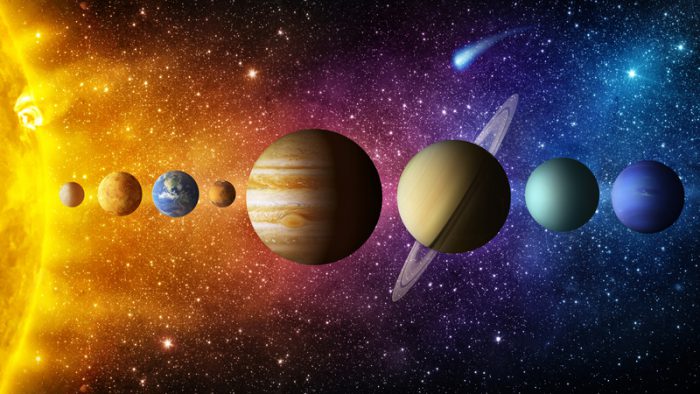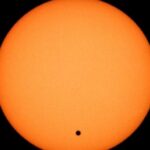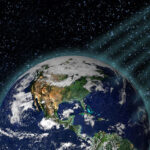| Since the Sun’s distance sets the scale of the entire solar system, Tycho believed Mars was close enough for its apparent position in the sky to be shifted measurably as the Earth’s rotation carried an observer from one side of the globe to the other. Tycho (at least some of the time) believed he could see a difference with his pre-telescope equipment, but in fact, the solar system was much bigger than he had assumed, far beyond his abilities. A century later, at another close approach of Mars, Jean Richer (in 1672) used a telescope to get the first rough estimate of the distance of Mars, with an uncertainty around 30% Edmond Halley (1656-1742) suggested tracking the passage of the planet Venus in front of the Sun, in one of its infrequent “transits of Venus.” When this happens, a telescope observing the Sun (by projecting its image, or using a dark filter) sees the dark disk of Venus slowly creeping across the bright face of the Sun. By noting (1) where on the Sun’s disk is the crossing seen, (2) timing its duration at two far-apart points on Earth, and (3) comparing the times, one can calculate the distance to Venus and from it the scale of the solar system. “From Stargazers to Starships” presents a simplified calculation of the AU, based on the transit of 8 June, 2004, in sections #12c-e. Unfortunately, no “transits of Venus” happened in Halley’s own time. They occur in pairs, more than a century apart. One occurred in 1639–too early. The next ones did not take place until 1761 and 1769, and astronomers were prepared for them. One of the goals of the famous expedition by Captain James Cook to the Pacific Ocean was to observe the transit from a point far from other observers. Unfortunately, an unexpected observing effect, a “dark bridge” between the disk of Venus and the sky beyond (“black drop effect”), badly degraded the accuracy of the timing of the transit. No transits of Venus occurred in the 20th century, but one did occur on June 8, 2004, followed by another one in 2012. Observers in the US only saw the end of the 2004 event, though the world-wide web covered the phenomenon very well. Later astronomers realized that some asteroids passed quite close to Earth. Today we worry about any of them actually hitting Earth, but their discovery also made some astronomers happy. Because of their nearness, their viewing angles from separate locations were much larger, giving a bigger parallax and more accurate estimates of their distances. That gave a much better estimate of the AU. Still later the giant radio telescope whose (fixed) dish is nestled in a valley near Arecibo, Puerto Rico, was used to focus a radar signal whose beam was bounced off the planet Venus, and timing its “echo” gave an even more accurate estimate of the AU. Today, of course, one also can use the orbital mechanics of space probes, tracked by radio as they pass near major planets. |


